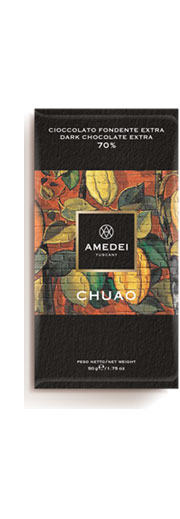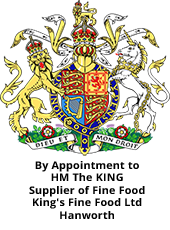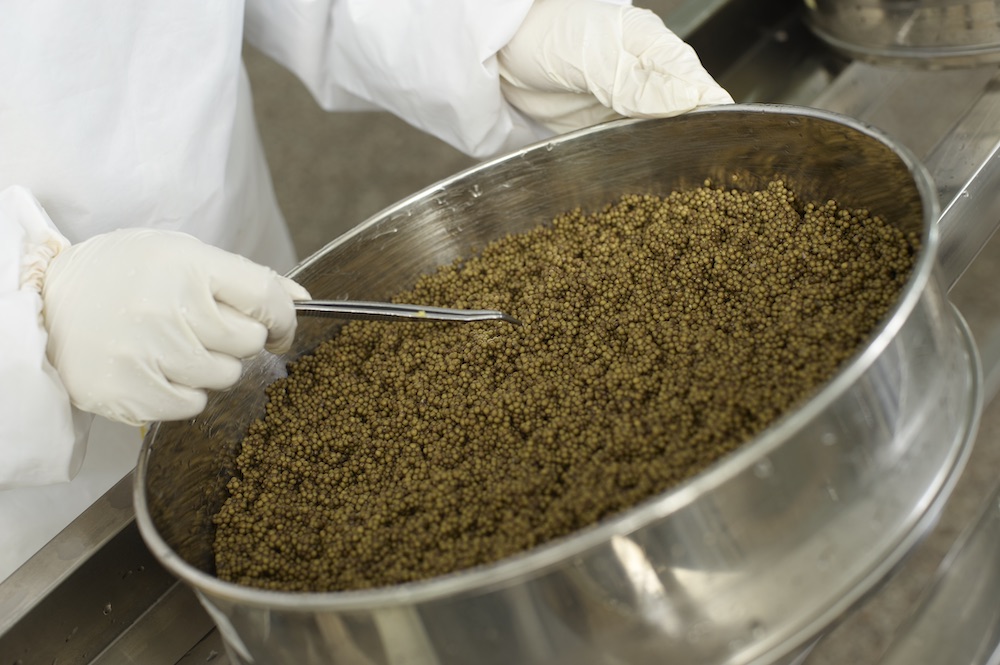About Caviar, King's Fine Food Blog, News
How to enjoy King’s Caviar by Laura King
How to enjoy King’s Caviar by Laura King
Caviar is best served as simple as possible – using mother of pearl or horn utensils.
To taste caviar: We always taste caviar on the soft cushion of the back of our hand between the thumb and forefinger.
Let it rest for a few seconds and then taste by lifting the caviar from your flesh with your lips and tongue and allow it to gently roll around your mouth. The caviar will be very soft on the palate.
Caviar should not pop in the mouth – this only happens with caviar that has been pasteurized which firms up the egg and gives caviar an ambient shelf life. This is not something we recommend as pasteurisation takes away the subtlety of the product.
Beluga (Huso Huso) – Country of Origin: Belgium
Considered as the King of caviar, Beluga is rare because it takes 12 years to produces its eggs. It commands a very high price, often three times the price of all other caviar. Steely grey in colour, it’s generally the largest egg with notes of walnuts and cream and hints of both the sea and finest quality salt.
Oscietra (Gueldenstaedtii) – Country of Origin: Belgium/Germany/Italy
Oscietra sturgeon produce their eggs after 8 years. With a beautiful golden/brown colour, they have a nutty, mellow taste, which develops into a buttery sweetness, similar to lobster. Historically the egg is smaller than Beluga, but with increased farming, the egg size can sometimes be almost as large as its mighty cousin.
Golden Oscietra (Gueldenstaedtii) – Country of Origin: Belgium/Germany
Historically, when wild caviar was available, Golden Oscietra was always referred to as “The Shah’s Caviar”. This rare egg is rich, creamy and has a beautiful light gold colour. It is often bigger than darker egg Oscietra.
Siberian Sturgeon (Baerii) – Country of Origin: Belgium//Germany
This Siberian sturgeon is 5-6 years old when it produces its eggs. It has a more intense mackerel-like flavour than Oscietra, often with long hazelnut notes and a colour ranging from dark grey to ebony. This sturgeon is farmed far more than any other as it produces its eggs relatively quickly.
Aquitaine (Baerii) – Country of Origin: France
Aquitaine produces the eggs after 5 years. It has a nutty sea taste with low acidity, and ranges from a steely grey colour, similar to Sevruga, to jet black. Aquitaine, like our Siberian Sturgeon, is also from a Baerii sturgeon but is exclusively farmed in France.
Imperial (Schrenkii X Dauricus)
This is a hybrid of the Acipenser Schrenckii and Acipenser Dauricus. The caviar has a large-sized egg with delicate but intense almond cream flavour. Sometimes, these eggs can be remarkably golden in colour, but more commonly are a vibrant walnut brown to olive-green hue.
Platinum (Gueldenstaedtii X Baerii) – Country of Origin: Belgium
Hybrid caviar of Oscietra and Siberian Sturgeon, Platinum has a fresh and intense flavour, often with long nutty notes and a buttery undertone and a colour ranging from dark grey to ebony. This is one of the least expensive caviars but incredibly popular, with a very large egg.
Sevruga (Stellatus) – Country of Origin: Germany
Sevruga tastes of the sea. It is often the preferred choice for caviar dealers around the world because of its resemblance to wild caviar. This small, grey egg is packed with a delicious salty flavour that lingers, often more than other caviars.
A Brief History of Caviar
The word ‘caviar’ is a Persian term that means ‘cake of strength’. It’s a common assumption that the Russians began extracting and consuming caviar when it was actually the Persians in the 16th century. They believed it had healing properties. In the 18th century, caviar was regarded as the food of the poor until royal chefs introduced Russian Tsars and nobility to it. This set-in motion the demand for caviar as a delicacy – until 2008, when wild sturgeon fishing was banned under the Bern Convention, an international agreement to protect animals and the environment. Since then, all legally produced caviar has come from sturgeon farms.
Caviar is the food of the Gods and an experience never forgotten…




